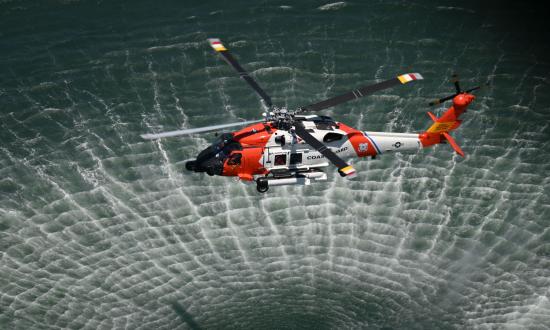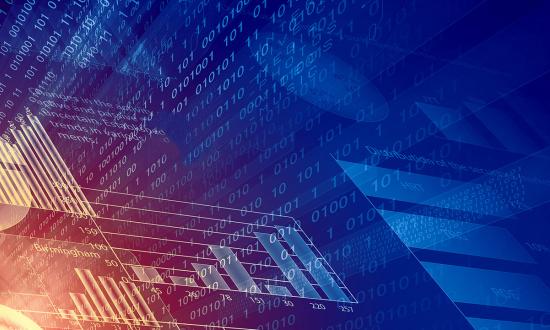The Navy is drowning in data. The data floodwaters have risen over the past decade with the increase of sensors and systems. Indeed, analysts predicted the Navy would be overwhelmed with data by 2016.1 And now everyone has an opinion on how to cure its data ills.
Proceedings has published several essays on data science. They range from discussions on data biases, data culture and data aggregation, to the constant fears of too much data and how to deal with it.2 Addressing these concerns, by last count, are at least nine Department of Defense (DoD)-wide AI-related strategies, billions of dollars in funding and research, and several initiatives.3
Yet, the data science literature in DoD tends to be prescriptive. Thus, service members regularly read about the promises of data science and how
it should be used, but struggle to see how it is used, often with remarkable results.
In fact, data science can thrive at sea. As a recent carrier strike group (CSG) deployment shows, there are numerous lessons one can take from a group of sailors and civilians eager to learn, inspired to improve, and willing to write lines of code to solve the most pressing problems for a commander at sea.
Intelligence and Data Science at Sea
Afloat, there is a demand for a data-rich, advanced-analytic capability. A CSG commander cannot rely exclusively on off-board intelligence data analysis—particularly in war, when communication may be degraded or cut.
This highlights two points. First, solving the information needs of the afloat commander requires onboard analysts who can not only access, exploit, clean, and analyze data, but who also can develop analytic tools on board the ship to convert files, automate processes, and visualize layered data to provide assessments for the commander’s unique information needs.
Second, the information warfare community’s (IWC’s) knowledge of the adversary and all-source operational intelligence expertise must now include data science skills.4 These include—at a minimum—a clear understanding of data sources, data-structuring methods, the means to obtain the source data in various shipboard bandwidth conditions, and the skills for designing algorithms and writing in a language that shipboard computers can understand.5 Analysts need these skills.
IW leaders afloat—especially those supporting maritime operations in denied or degraded communication environments—need to understand these skills and tools but must also be prepared to lead the officers and sailors whose analysis at sea now requires them.
A Data Success Story
The 2021–22 Carl Vinson CSG deployment highlights the contributions of on-ship data fluency, afloat coding and scripting, and data visualization with mapping software.6 Two general examples from the deployment are useful.
First, the Carl Vinson team wrote computer code to pull data from specific intelligence databases.7 Programmers and data scientists use common and powerful scripts—referred to as “scraping” or “crawling”—to gather large amounts of data from websites.8 This minimizes the inefficient practice of jumping from one open browser tab to another—copying data for intelligence briefings—and shrinks the amount of bandwidth required to conduct the queries. It also reduces the risk of taxing a computer’s virtual memory.9
Second, the team was able to collect large amounts of tactical data from the operational environment and convert that information to files that could then easily be displayed in mapping software—often with a few lines of code. So rather than taking some data and slowly drawing them on a PowerPoint slide with inconsistent degrees of precision and accuracy (the usual practice), the team was able to do more, display more, and ensure the commander’s essential elements of information were answered.
These processes saved time and resources. The latter example transformed a task that originally required four analysts to dedicate the bulk of their 12-hour shifts into a new process accomplished by two senior analysts in 3–4 hours, enabling the analytic team to attack other problems. More important, the analysts’ time and energy could be applied to discerning assessments and identifying opportunities for further collection and exploitation, rather than laboring simply to capture the data and struggling to represent it in a meaningful way.
The value from automated processes and use of narrow AI and data science during the CSG’s deployment are instructive, insofar as they reveal that the power of data science in the afloat environment does not need to manifest in a complex automated machine or robot. Rather, the CSG’s experience demonstrated the power and elegance of coding scripts that were developed on the ship using programming skills to enable warfare commander decision-making.10
Ultimately, the automated processes and tools developed by the CSG’s analysts increased their expertise and capabilities as analysts. The algorithms served to vastly enhance battlespace awareness, save analysts’ time, and enable them to answer the most challenging and difficult problems.
The Carl Vinson team also realized that advanced and historical analysis required the use of disparate and unstructured data sources that were not being effectively processed, curated, or stored. Carl Vinson’s innovative and data-fluent analysts solved this problem through building the team’s familiarity and confidence in using coding tools. The team wrote creative scripts to both automate common tasks and solve the most difficult problems. They excelled at sharing their knowledge, from the most experienced coder to the data novice.
The Challenge of Data Science at Sea
The Carl Vinson intelligence team seized opportunities. A talented mixture of sailors and a civilian with experience in coding combined with a can-do attitude and a desire to get better to make a difference. Unfortunately, data science and the words “coding” or “writing code” sometimes carry a negative stigma. Many sailors think writing code and doing data science are for engineers or those with mathematical minds. Nonsense. Data science is a wide and deep area of study. Many sailors, with just a few hours of study, can write lines of code to exploit and visualize millions of rows of data. The added benefit is that once a line of code or a script is written, a sailor with basic coding skills can pull archived scripts to run analyses that previously would have taken hours.
The push for more data science in the Navy and the IWC will raise questions and concerns: What are appropriate qualifications for a data scientist at sea? Does the Navy need enlisted ratings (for example, data intelligence specialists or cryptologic data technicians) for data science? How does the Navy scale these skills across a large community? And more than a few voices will raise concerns that the IWC cannot simply add more requirements on a force already asked to do so much. The need for detailed knowledge of the adversary, intelligence systems, online tools,
and, of course, the demands of leadership all vie for attention in this data-driven world.
AI Is Not a Panacea
Data science in the Navy will not be done in one place. It will be done at sea and on shore. It will be done by young sailors and salty senior officers. And data fluency is everyone’s responsibility.
AI, data science, and its close cousins—the cyber domain, for example—require all naval professionals to speak and understand a particular lexicon that remains foreign for many. But as more sailors learn data science, regardless of their expertise, this truism remains: Data tools and well-written scripts increase an analyst’s most important skills—the ability to reason, to ask the correct questions, and to address complex problems. General artificial intelligence (AI) might someday replace areas of human analysis—but the world is nowhere close to this.
Finally, it is sobering to remember that data, its value, and its presence in Navy life are nothing new. Look back more than a hundred years, to 1918. Then, Lieutenant Jules James, writing in Proceedings, published a data spreadsheet. In a piece titled, “Convenient Method of Handling Steaming Data,” James used seven years of steaming data to create a scatter plot to tell ship captains how far and how fast they could travel, and in what conditions, given the amount of their coal or oil fuel stores.11 A simple plot and chart, certainly, but a reminder that quantitative information is essential to understanding our world and anticipating what might come.
1. See Isaac R. Porche III, Bradley Wilson, Erin-Elizabeth Johnson, Shane Tierney, and Evan Saltzman, Data Flood: Helping the Navy Address the Rising Tide of Sensor Information (Santa Monica, CA: RAND Corporation, 2014).
2. CDR Gary Lazzaro, USN, “Naval Officers Must Be Data Literate,” U.S. Naval Institute Proceedings 148, no. 1 (January 2022); CDR Henry Lange, USN, “Empower Naval Intelligence with Data Analytics,” U.S. Naval Institute Proceedings 146, no. 9 (September 2020); and CAPT George Galdorisi, USN (Ret.), “Taming the Data Deluge,” U.S. Naval Institute Proceedings 147, no. 3 (March 2021).
3. Department of Defense, “Summary of the 2018 Department of Defense Artificial Intelligence Strategy: Harnessing AI to Advance Our Security and Prosperity.” For a recent critical and comprehensive overview, see the Government Accountability Office, “Artificial Intelligence: DoD Should Improve Strategies, Inventory Process, and Collaboration Guidance,” March 2022.
4. The Navy information warfare community is not unique in requiring data science skills. Every community in the Navy would benefit from some level of data science skills and data science fluency.
5. Michael Tiefel and Andrew Orchard, “Battle Space Awareness Tools Are Central to Fleet Readiness,” CIMSEC, 6 December 2021.
6. Commonly referred to as geographic information system (GIS). GIS is a computer system that analyzes and displays geographically referenced information. It uses data attached to a unique location.
7. COL Harry D. Tunnel, USA (Ret.), “Tactical Data Science,” Military Review, July–August 2020; Sara Kelnah et al., “Evaluating the Utility of Analyst-Level Access to Authenticated APIs,” Proceedings of the 2020 Annual General Donald R. Keith Memorial Capstone Conference at West Point, New York, 30 April 2020.
8. U.S. Government Services Agency, “GSA Focus: Web Scraping.”
9. Benmin Smith, “Does Having a Lot of Apps Open Slow Down the Internet?” Internet Access Guide, 24 July 2020. Narrow AI, also known as weak AI or applied AI, is artificial intelligence designed to perform a specific task or set of tasks. It is focused on one area and is not designed to be a general-purpose AI. Examples of narrow AI include Siri, which is designed to understand and respond to voice commands. General AI, also known as strong AI or artificial general intelligence (AGI), is artificial intelligence capable of performing any intellectual task that a human can. While narrow AI is currently prevalent in the world today, general AI does not yet exist.
10. LT Jules James, USN, “Convenient Method of Handling Steaming Data,” U.S. Naval Institute Proceedings 44, no. 3 (March 1918).







